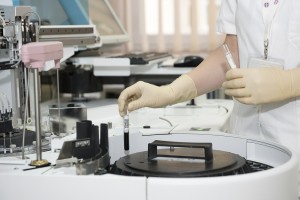This content has been archived. It may no longer be relevant

As part of the larger context of life science language services, which also includes pharmaceutical translation and medical interpretation, medical device translation projects place a greater burden of responsibility on the translator than projects in non-medical fields. The reason for this should be obvious: there’s no hyperbole in saying that medical translation can be a matter of life and death. With this responsibility comes great compensation for a qualified LSP. Life sciences constitute one-third of the world’s chemical industry, which is known to be profitable.
What’s so different about translating for a medical device, as opposed to a piece of consumer electronics? It’s not necessarily a question of a difference of process, but of rigor. Life sciences translation occupies a lofty position, next to legal and government translation, where there is only room for translators with precision, speed, and total expertise. All three of these qualities must be present. A quick and precise translator has leeway to do research and learn when translating for a commercial client. In the medical realm, a translator who needs to do any but the briefest research on the topic at hand probably shouldn’t be doing the job.
But what, specifically, separates these projects from the others?
The price of quality
Anyone purchasing translation services for any industry has concerns about cost. There’s always a budget to be taken into account. It’s a point of pride with us at TrueLanguage that we take our client’s budgetary situations into account when quoting projects. You can read some of our other blogs (specifically, here and here) to learn about our process, and find out how we’re able to meet our clients’ timing and cost requirements when needed, without compromising our quality standards. Yet with medical device translations, though cost is a consideration, it is not the primary consideration. According to Common Sense Advisory, medical translation buyers are concerned with translation quality over cost. Quality is paramount, and can there be a price cap on quality?
Terminology is critical
Translating the documentation for a new model of pacemaker is not the time to be fuzzy on the target language’s cardiological terminology. It’s not enough for a translator to research independently and make educated choices, no matter how much verification she seeks. She has to know what to say, and how to say it, with the confidence that can only come from complete and current familiarity with the subject. To this end, it’s not unusual for medical device manufacturers to want to play a more proactive role than other industrial clients in their translation projects. They want to know their translators, evaluate their work, and provide them with their own training before translation begins. And once they’ve trained these translators, they’ll want to use them every time.
Compliance with regulations
Let us suppose two hypothetical manuals to be translated, one for a medical imaging device, and one for a printing press. The manual for the press may play a role in on-the-job training; a print shop worker still feeling his way may wish to read the instructions to solve a problem. How would you feel if the medical technician overseeing your MRI stopped in the middle to check the manual?
You’d feel uneasy, which is why medical technicians receive such thorough training before they start work. Medical device translations aren’t meant to be read “on the fly”. They are mandatory documentation for training, maintenance, and legal purposes. As such, they are subject to stringent regulations of style and quality, well beyond normal quality assurance standards*. And even when the client provides translators with training for terminology and subject matter expertise, the onus is on the LSP to ensure compliance with these regulations, before the translations are delivered.
One upshot to all of the above: a translation buyer for a medical device manufacturer is apt to be more familiar with the ins and outs of translation than buyers in other industries, which is always a plus, as far as we’re concerned. An established need for perfect terminology management often means exhaustive glossaries for us to work with, and a direct openness about what the client needs, and when. That level of client engagement is what enables us to give the best of our best to a project. For translations that will keep people alive and healthy, only the best of the best will do.
*This includes any standards specific to the translation industry, such as EN 15038 (Europe) and ISO 17100 (international, and still under development as of this posting). These must always be applied in conjunction with client-side regulations and standards in the life sciences.
Consider a Partnership with TrueLanguage
Are you looking for a partnership with a language service provider? If so, you may wish to consider TrueLanguage. We offer ISO-certified state-of-the-art business translation services that are on budget, on time, and to the exact specification. Every time. Or perhaps you’re just looking for a cost-free, no-obligation estimate for your next translation project. Either way, we’d love to hear from you!

